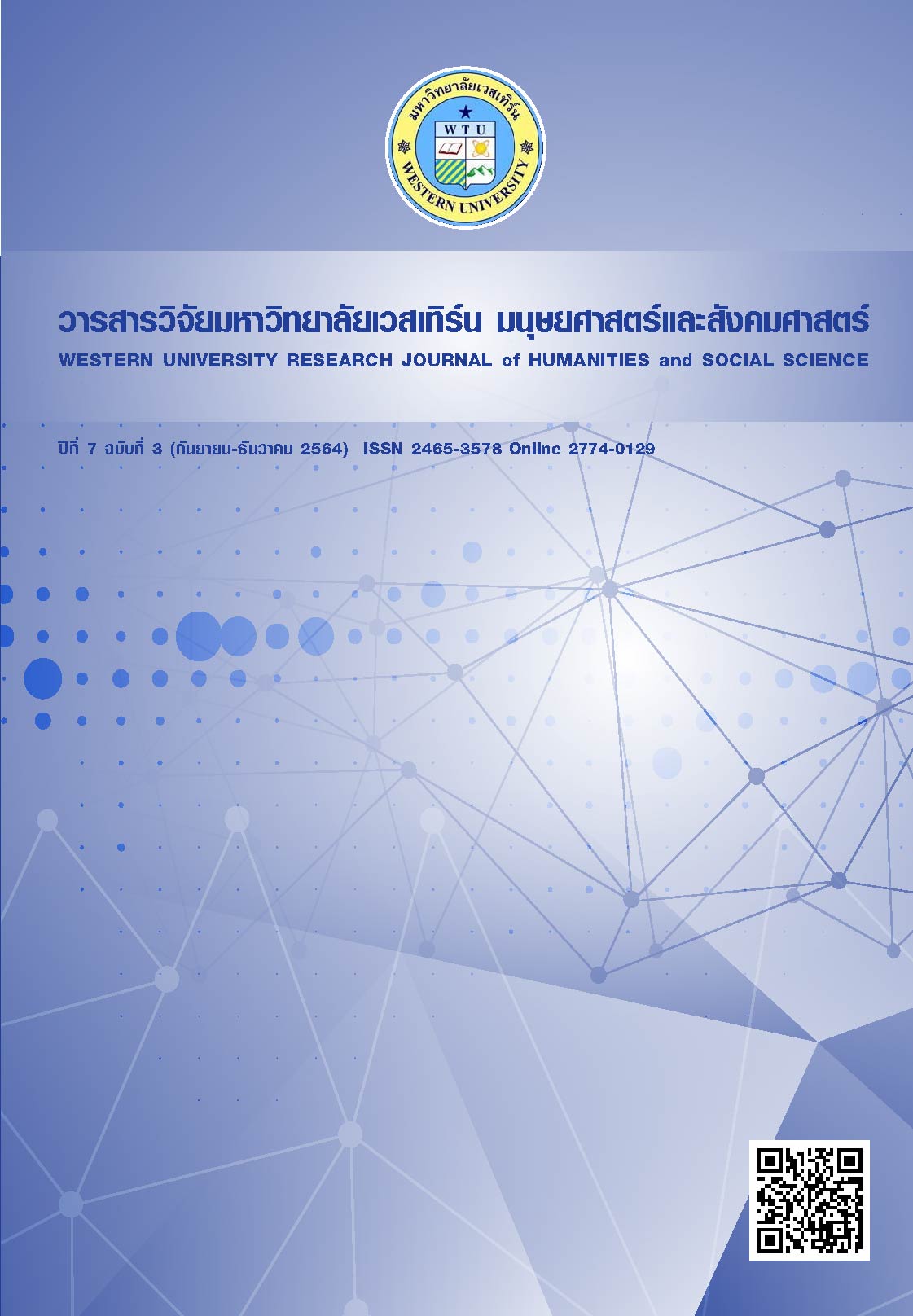Service quality, golf course image, perceived value, and golfer satisfaction for golf tourism in Thailand
Main Article Content
บทคัดย่อ
This study used qualitative research to investigate the four main units of service quality, golf course image, perceived value, and golfer satisfaction for golf tourism in Thailand. Statements from experts in the golf tourism industry and university educators who responded to open-ended questions helped to clarify the meaning of the four main units which were service quality, golf course image, perceived value, and golfer satisfaction of the qualitative research for golf tourism in Thailand. The results indicated that golf course image was the major difference between golf tourism in Thailand and golf tourism in other countries, golf course image was the major reason given for why golf tourists play golf in Thailand. The service quality was the critical qualification for the components of competitive advantages, and service quality was the most important point for the improvement of golf tourism in Thailand. The results of the interrelationships among service quality, golf course image, perceived value, and golfer satisfaction indicated that 1) Service quality had a direct and positive effect on the golf courses image 2) Service quality had a direct and positive effect on perceived value 3) Golf course image had a direct and negative effect on perceived value 4) Golf course image had a direct and positive effect on golfer satisfaction. And 5) Perceived value had a direct and positive effect on golfer satisfaction.
Article Details
เอกสารอ้างอิง
Anderson, E. W., & Sullivan, M. (1993). The antecedents and consequences of customer satisfaction for firms. Marketing Science, 12, 125-143.
Andreassen, T. W., & Lindestad, B. (1998a). The effects of corporate image in the formation of customer loyalty. Journal of Service Marketing, 1, 82-92.
Andreassen, T. W., & Lindestad, B. (1998b). Customer loyalty and complex services, the impact of corporate image on quality, customer satisfaction and loyalty for customers with varying degrees of service expertise. International Journal of Service Industry Management, 9, 7-23.
Baker, J., Parasuraman, A., Grewal, D., & Voss, G. B. (2002). The influence of multiple store environment cues on perceived merchandise value and patronage intention. Journal of Marketing, 66, 120-141.
Bolton, R. N., & Drew, J. H. (1991). A multistage model of customers’ assessment of service quality and value. Journal of Customer Research, 17, 375-384.
Cai, L. (2002). Cooperative branding for rural destinations. Annals of Tourism Research, 29(3), 720-742.
Churchill, A. G. (1996). Basic Marketing Research. Orlando, FL: Dryden Press.
Fornell, C. (1992). A national customer satisfaction barometer, the Swedish experience. Journal of Marketing, 56, 6-21.
Fornell, C., Johnson, M. D., Anderson, E.W., Cha, J., & Bryant, B. E. (1996). The American customer satisfaction: Nature, purpose, and findings. Journal of Marketing, 60, 7-18.
Hennessy, S. M., Macdonald, R., & Maceachern, M. (2008). A framework for understanding golfing visitors to a destination. Journal of Sports & Tourism, 13 (1), 5-35.
Howard, J. A., & Sheth, J. N. (1969). A theory of buyer behavior. New York: Wiley.
Johnson, M. D., Gustafsson, A., Andreassen, T. W., Lervik, L., & Cha, J. (2001). The evolution and future of national customer satisfaction models. Journal of Economic Psychology, 22, 217-245.
Kaplan, A., & Goldsen, J. M. (1965). The reliability of content analysis categories. In H. D. Lasswell, N. C. Leites and Associates (eds.). Language of I Politics; Studies in Quantitative Semantics. Cambridge: MIT Press.
LeBlanc, G., & Nguyen, N. (1996). Cues used by customers evaluating corporate image in service firms: An empirical study in financial institutions. International Journal of Service Industry Management, 7(2), 44-56.
Lee, G. S. (2003). The role of hotel image and image congruence and their effect on repeat intention in the hotel industry. Master Thesis, University of Nevada.
Marris, P., & Thornham, S. (2000). Media studies. New York: New York University Press.
Martensen, A., Gronholdt, L., & Kristense, K. (2000). The drivers of customer satisfaction and loyalty, cross industry findings from Denmark. Total Quality Management, 11, 8544-8553.
Oh, H. (2000). Diners’ Perceptions of Quality, Value and Satisfaction. Cornell Hotel and Restaurant Administration Quarterly, 41(3), 58-66.
Oliver, R. L. (1980). A cognitive model of the antecedents and consequences of satisfaction decisions. Journal of Marketing Research, 17, 460-469.
O’Loughlin, C., & Coenders, G. (2002). Application of the European customer satisfaction to postal services. Structural equation models versus Partial least squares. Retrieved January 17, 2018, from
http://www3.udg.edu/fcee/economia/n4.pdf
Parasuraman, A., Zeithaml, V. A., & Berry, L. L. (1988). SERVQUAL: A multiple item scale for measuring consumer perceptions of service quality. Journal of Retailing, 64(1), 2-40.
Petrick, J. F., Backman, S. J., Bixler, R., & Norman, W. C. (2001). Analysis of customer motivations and constraints by experience use history. Journal of Leisure Research, 33(1), 56-70.
Petrick, J. F., & Backman, S. J. (2002). An examination of the determinants of golf travelers’ satisfaction. Journal of Travel Research, 40 (3), 252-258.
Rust, R. T., Zahorik, A. J., & Keiningham, T. L. (1995). Return on quality (ROQ): Making service quality financially accountable. Journal of Marketing, 59, 70-88.
Thai News Agency. (2019). Thailand Best Golf Destination in Asia Pacific. Retrieved November 21, 2019, from https://tna.mcot.net/tna-366875
TAT News. (2019). Thailand Golf Travel Mart 2019. Retrieved November 29, 2019, from https://www.tatnews.org/2019/08/thailand-golf-travel-mart-2019-heads-for-chiang-mai-the-rose-of-the-north
Woodruff, R. B. (1997). Customer value: The next source for competitive advantage. Journal of the Academy of Marketing Science, 25(2), 139-153.


